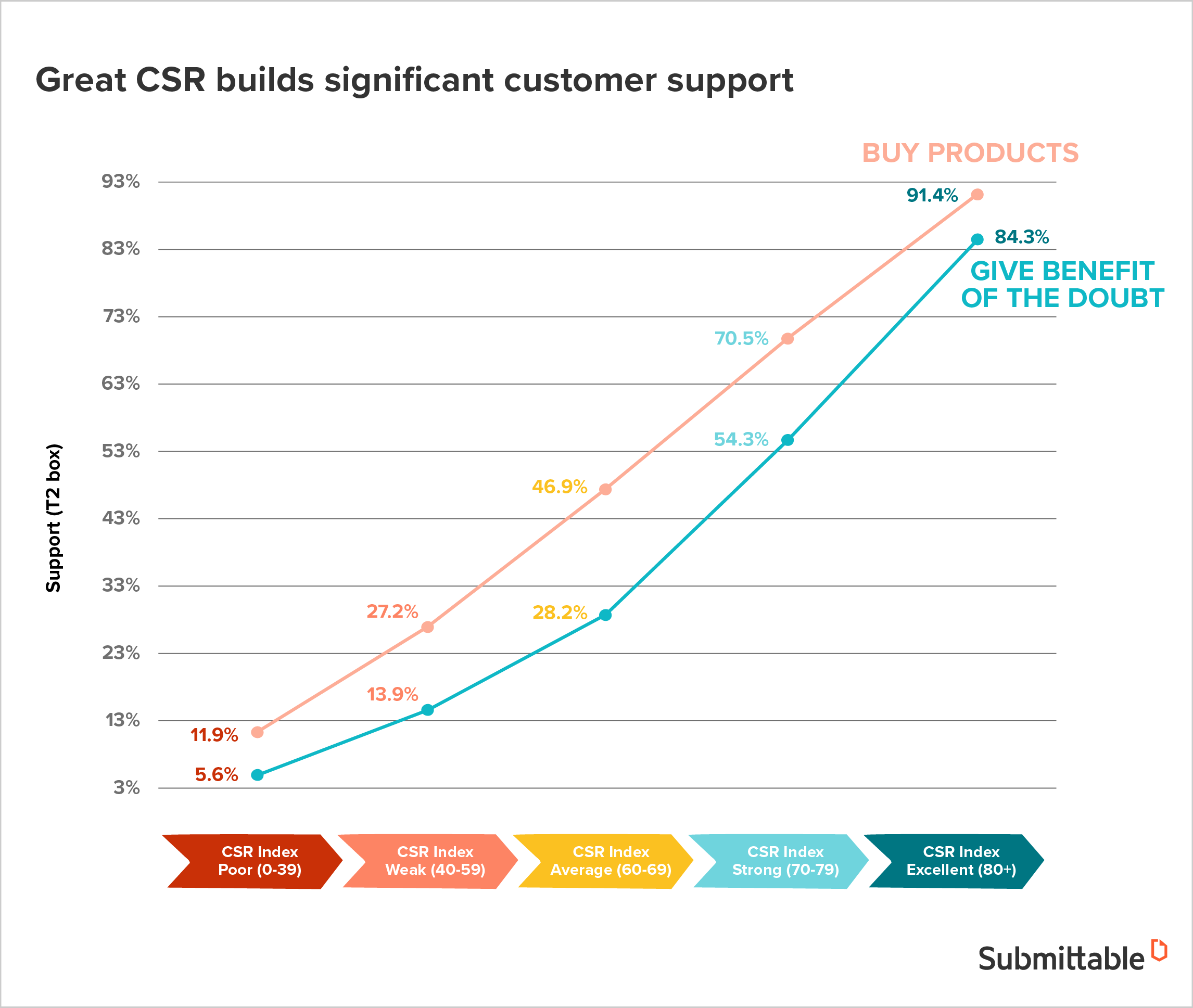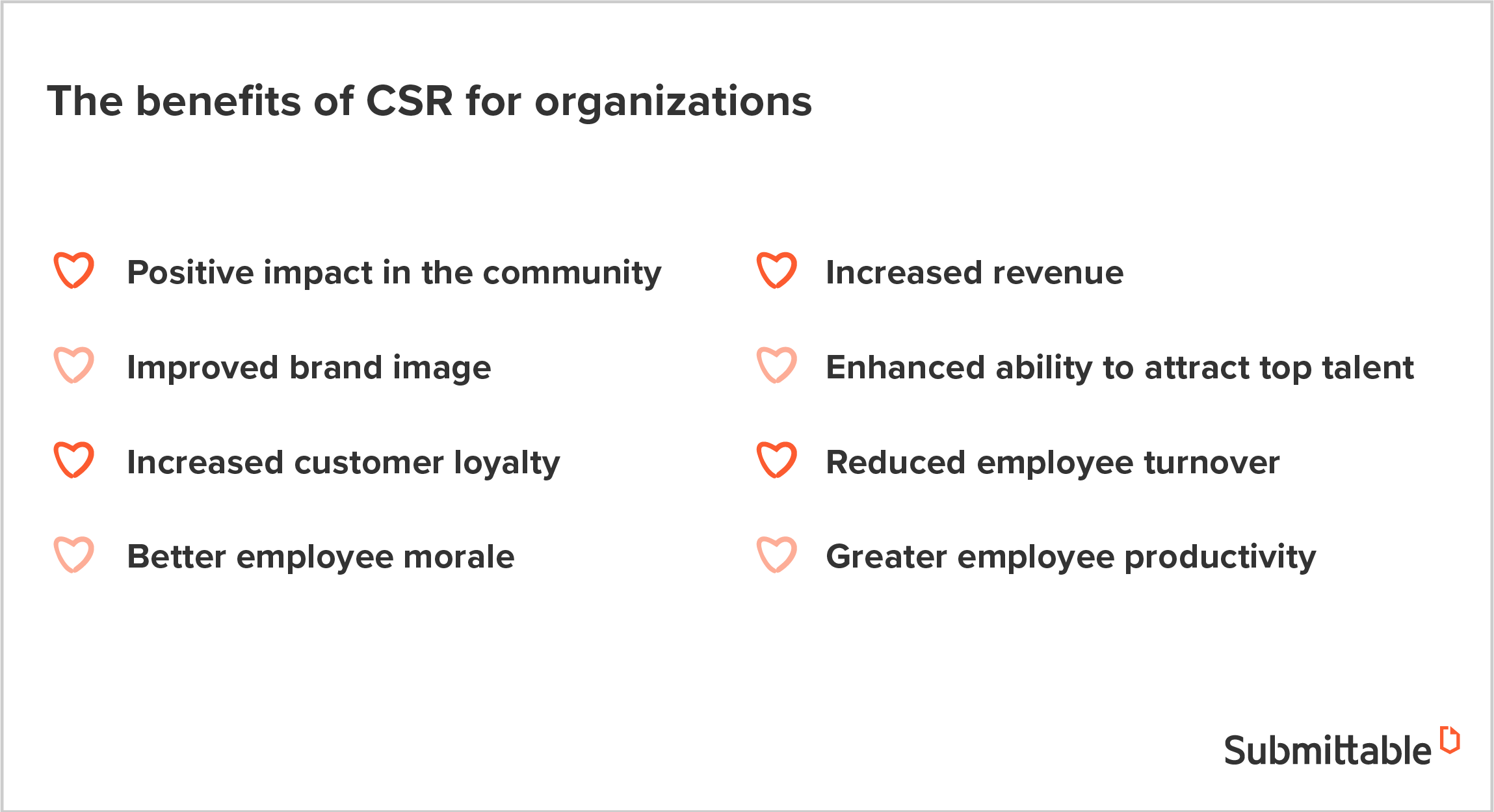If there’s any aspect of business that’s evolved greatly in the past few years, it’s corporate social responsibility (CSR).
CSR came from humble beginnings in the 1950s. Companies began to understand that contributing to the communities—where their profits came from—was a smart move that created a virtuous cycle.
That’s how corporate philanthropy was born.
The challenge in the past has been that this kind of corporate giving wasn’t always aligned with the core business of the company. As a result, companies were making their CSR initiatives without much high-level strategy. They were taking on everything from environmental hazards, social issues, and even governance challenges.
Today’s focus is more on shared value. Organizations are addressing issues that are more directly relevant to their business model. For example, coffee companies are addressing how local farmers are treated. Energy companies are taking up the challenge of tackling climate change.
While not every organization can find that win-win sweet spot for their CSR, they are out there.
With a tightly-focused CSR strategy, brands can build significant value. Beyond making a difference in local communities, companies can increase sales, drive customer loyalty, and recruit better talent with the right approach to corporate social responsibility.
It all starts with nailing down the purpose behind how and why your organization is engaging in CSR work.
The goal of corporate social responsibility: shared value

Let’s not mince words: Organizations engage in CSR because it helps them win.
While winning customers and business is top of mind for many organizations, CSR helps companies grow and have greater influence no matter what their central missions are.
The data tells the story: Reputation Institute reports that over 91% of those surveyed lean towards buying from a company with an excellent CSR track record. That’s alongside the over 84% of respondents who said that companies with top-notch CSR get the benefit of the doubt during a crisis.
But that’s not the entire story behind how and why companies do CSR. Increasingly, organizations are being asked by their customers to engage in CSR that is both authentic and aligned.
In other words, customers want to see companies pursue CSR initiatives that portray genuine concern for communities served and alignment with the organization’s core products and services.
Millennials, according to Deloitte, are particularly skeptical about the motives of businesses. And they let their wallets do the talking for them. Organizations risk missing out on this massive generational cohort, along with all younger generations, if their CSR affairs are not in order.
At the end of the day, CSR is a business practice that calls your potential customers in and asks them to first invest in what you stand for as a company. Once you’ve built that kind of trust and rapport with a customer, their investment in your products follows closely behind.
Here’s another way to put it: In 2020 and beyond, strong CSR is a must for organizations looking to thrive.
The ultimate purpose of CSR is to maximize shared value among organizations, employees, customers, shareholders, and community members. While the precise value looks different for each of these stakeholders, the mutually beneficial nature of CSR initiatives can still be sustained.
How the purpose of corporate social responsibility shapes the practice of CSR

The last thing you want is to run a good CSR campaign only to be accused of “woke-washing.”
Far too many examples abound of organizations engaging in highly-questionable advertising and attempted CSR work that seemingly co-opts righteous social causes for commercial gain.
If you’re intentional and strategic about how you structure CSR work, you can avoid such a fate and build a corporate social responsibility program that delivers massive benefits to your community as well as your company. Here’s how:
Align with your brand’s purpose
Here’s where that idea of shared value kicks in.
The best way to be authentic in your CSR work is to ensure there’s connective tissue between what you care about as a company and the work you do every day.
Customers, especially Millennials and Generation Z, can sniff out opportunistic and short-lived attempts at social impact work taken up by different organizations.
Learn from companies that got this right. Take Coca-Cola for example. Their “5×20” CSR program focuses on employing five million women in developing countries by 2020 in bottling and distribution roles. Now obviously, this helps Coca-Cola’s bottom line. It also delivers improved access to healthcare and better education to these women and their families.
That’s a strong example of alignment with both community needs and corporate goals.
Focus on real, human challenges
Just like customers want your products and services to actually work, they also want your CSR efforts to affect real change in communities.
To put it bluntly, many consumers are tired of “drive-by corporate philanthropy.” They’re much more interested in companies that offer valuable products and services alongside meaningful social impact campaigns.
That may sound like a tall order but that’s what today’s customers demand.
Look at Visa’s recent CSR work. As one of the world’s leading financial services companies, they partnered governments and local community-based organizations to bring banking and access to reputable financial institutions to previously unbanked individuals. When the Gates Foundation studied this work, they found that it helped these community members build assets and better manage their finances over time.
Activate the C-suite
There’s a reason that Sundar Pichai of Google is one of the world’s most respected CEOs.
It’s not just because he runs one of the most influential tech companies out there.
He’s so well-regarded because he’s perceived as a business leader who stands up for issues that matter while running a top company. Pichai risked significant political capital and took a stand for the Muslim community and other communities in 2018 and it paid off.
Modern consumers frankly expect those in the C-suite to juggle both roles simultaneously. No one’s saying it’s easy. But it is increasingly demanded of corporate leaders.
These business leaders are seeing the writing on the wall, too. As the Boston College Center for Corporate Citizenship (BCCCC) reports a 75% increase in CSR being directed from the C-suite from five years ago, the data tells the tale.
Consumers want CSR leadership from the top brass as well as the grassroots.
Drive engagement inside and out
Let’s face it: You don’t build a top-flight CSR program alone.
Your employees will take care of that, if you set them up for success. With a modern platform for running CSR initiatives and the right local partnerships, your team can make real change happen. CSR programs also significantly increase employee retention, boost recruiting of top talent, and enhance workplace culture.
This is the promise of CSR and why so many organizations try to make it happen in their communities. One important aspect of making CSR work involves engaging local communities with humility by seeking to understand the historical context and linking to existing efforts in those neighborhoods.
At the end of the day, running a great CSR program is about building a talented, unified team within your company that works well with local leaders already engaged in social impact work. CSR is an exercise in leadership and so much of leadership is about finding the best in people and focusing it as part of a larger effort.
That’s what we mean by engagement within your organization as well as within the community.
Talk about it and be about it
Yes, CSR is great fodder for your marketing team. And it should be.
Now that that’s out of the way, just make sure it’s not all about marketing. After a while, employees and community members will disengage from your CSR efforts if they’re not doing real work that’s gaining tangible traction.
Discussing the nature and results of your CSR work and tracking its success is an important part of serving the broader corporate giving sector, and you should do it. Speeches, panel discussions, and annual reports should all be part of your CSR campaigns.
But don’t lose sight of the fact that you’re investing in CSR to make a difference, first and foremost. Just as you would with any new product or service, set clear goals and ensure the resources are in place to achieve them.
Managing for success in CSR programs from a centralized platform
As your organization pursues shared value among multiple stakeholders and learns from examples of promising CSR work, you’ll need CSR software.
Putting all of your CSR efforts into one centralized system helps you connect with community partners, engage employees in the work, and measure your results against your goals.
The tools you use to drive your CSR efforts forward can make or break your campaign and determine the extent of your impact.
